Most buildings are porous and have the ability to absorb moisture, and when a property doesn't have an existing damp proof course, perished damp proof course, a bridged damp proof course or a bridged cavity, rising damp is likely to occur, or has previously occurred. The most important part is diagnosis of the problem, many people claim to be a damp specialist without any form of qualifications or understanding of traditional buildings. You will find there are many damp specialists that are approved contractors for a chemical company, this is often a 1 day training course. This doesn't make them a specialist in dampness investigations or even remedial works, and these so called damp specialists think everything is damp and offer a worthless guarantee.
A damp meter is a great bit of equipment, but these are very difficult to understand. Damp meters are very sensitive to hygroscopic salts and simply getting a few high readings in the original lime plaster isn't enough evidence to start hacking off all the plaster. Most older buildings that still have the original lime mortar in place may have had rising damp come and go and this has deposited some of these salts on the wall-plaster which will give high readings.
If you look at the picture below it shows that the old original lime plaster and wall paper have high readings, these are both dry.

We also offer and would recommend that all damp surveys are a destructive investigation to BRE Digest 245, this is a vertical profile drilled into the wall where samples of plaster are removed for testing, we can then tell how much is moisture and how much is hygroscopic salts. Armed with this information only then can we offer the most suitable method of repair.
http://blog.completepreservation.co.uk/2014/02/28/gravimetric-damp-testing-and-diagnosis-to-bre-245/
Not sure what type of damp you have? Read our blog that has pictures telling you what the problem is
Most rising damp is caused from high ground levels, read our blog post on high ground levels and see our typical drawing of how to lower the ground level
http://blog.completepreservation.co.uk/2014/04/24/reducing-high-external-ground-levels/
If you have rising damp on a cavity wall construction it is necessary to inspect the cavity for bridging, this is the normal cause of rising damp or it it can be a defect with membrane installation. Read our blog post http://blog.completepreservation.co.uk/2014/06/05/damp-proofing-survey-trowbridge-rising-damp-on-the-inner-skin-of-a-cavity-wall/
A typical damp pre-purchase damp survey will consist of a non-destructive examination of the internal and external parts of the building looking for defects that could be causing the damp problems.
Complete Preservation have all the latest equipment on the market which include moisture meters, thermal imaging cameras, boroscopes , endoscopes for drilling into cavity walls to check for bridging, hygrometers, infra red laser measurers and years of damp surveying experience.
Our professional damp survey reports which are accepted by mortgage companies contain a assessment of any problems in the building and will include pictures of defects, cad sketch plans along with our recommendations and costs for any remedial work. The survey will always be carried out by a CSRT qualified surveyor and a member of the Property Care Association as instructed by your professional advisors.
If a damp proof course is necessary it is installed in accordance to the British standard 6576: 2005.The damp proof course injection cream used by Complete Preservation has been awarded an Agrément Board certificate and conform to BS 6576: 2005 and the codes of practice of the BWPDA-Property Care Association of which Complete Preservations are members.
All of our injected damp proof courses can be guaranteed and insured by Guarantee Protection Insurance (GPI).
What should be in a damp and timber report? Most of the damp and timber reports I see when there has been a failure are not reports, they are a 1 or 2 page quotation and are worth nothing! Remember this report is evidence of all the observations internally and externally and all necessary recommendations from the original survey. http://blog.completepreservation.co.uk/2014/07/24/what-should-be-in-a-damp-and-timber-report/
Complete Preservation are specialists in damp diagnosis to chimneys, we were the first people to carry out a time lapse video of hygroscopic salt damp on a chimney, a gravimetric profile to BRE Digest 245 and salt analysis and a thermal image clearing showing the hygroscopic salts. A moisture (damp) meter can't define between moisture and hygroscopic salts, that is why when there is a damp problem on the chimney breast the so called specialist roofers and builders always say its a leak.
Have you got a damp stain on your chimney that you can’t seem to get rid of? Is it hygroscopic salts? Is it a leak?
We have seen many cases where roofs have been repaired around chimneys a number of times and the other roofer-builder has said the other company didn’t do the lead work correctly, roof repairs, chimney repairs or the pointing etc etc and then they still have a damp stain on the internal chimney breast again and again.
Recently I went to carry out a damp survey in Wiltshire, they had literally given up, this is how the story goes……. My client purchased a property 6 years ago, it was noted by the surveyor before purchase that the internal chimney breast had staining and the chimney probably needed small pointing works and further investigation was necessary. This work was carried out after they purchased the property in the summer and was decorated, a few months later on in the year the damp stains on the chimney breast came back, this time it was worse than before. So they called the roofer back in, he checked the chimney and tested it with a hose pipe and couldn’t see any problems….. he disappeared very quickly…….. They then called another roofer-builder, this guy pulls around on the lead flashing and seems to think the chase isn’t deep enough and also it needs a new roof, tells the client this is what needs doing, orders the scaffold and off we go again! The damp patch on the chimney seems to slowly shrink and disappear over the next few months, then its back again……… by this time my client said they couldn’t believe it. They then called the roofer out again and explained that the damp stain is back! He couldn’t find the cause and he disappeared very quickly like the last guy.
Next comes the roofer with the all singing and dancing website, more professional, and more knowledgable, and he seems to think the chimney needs to be simply taken down and capped over with some ventilation. Seems like a good sensible idea they think……….A couple of weeks later the scaffold lorry turns up, up goes the scaffolding, up goes the roofers, down comes the chimney, this is then all capped off, vented and pointed and looks like a brilliant job. The damp patch doesn’t go and the roofer can’t seem to find the cause….same old story!
You can imagine what my client was thinking now. By this time they had given up and thought they would have to put up with it. They then get some rising damp problems and contact a couple of damp proofers to come and carry out a survey, I then come along and have a chat about the high ground level causing the damp problem at the front, whilst looking at the front I said, “I see you’ve had a new roof then”, and bang….I get hit with it. And I said “thats probably salt damp” “Whats that” my client said, I then showed them a couple of case studies I had on dropbox. That was the Eureka moment for them. I went one better than that though, I showed them the damp patch grow, to do this I use a humidifier, this can produce high relative humidity quickly, give it 5-10 minutes you can see the damp patches grow. The below pictures show the humidifier in action raising the relative humidity of the room to show the hygroscopic salt damp patch growing.
This is before I raised the relative humidity
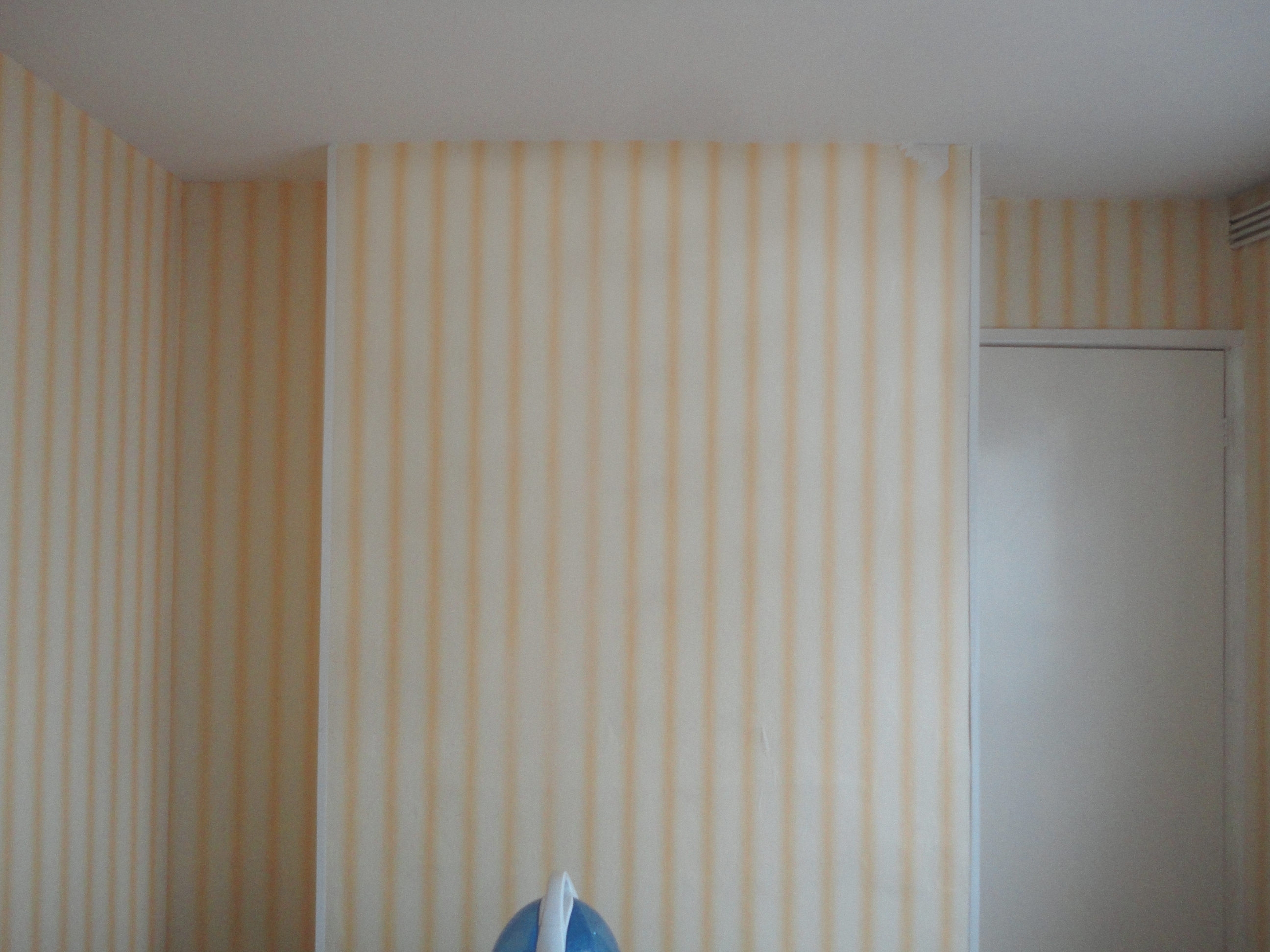
This is after , you can see the hygroscopic salts on the chimney breast now (damp looking patch-stain at top of chimney breast), also notice the vertical profile up the wall, BRE Digest 245
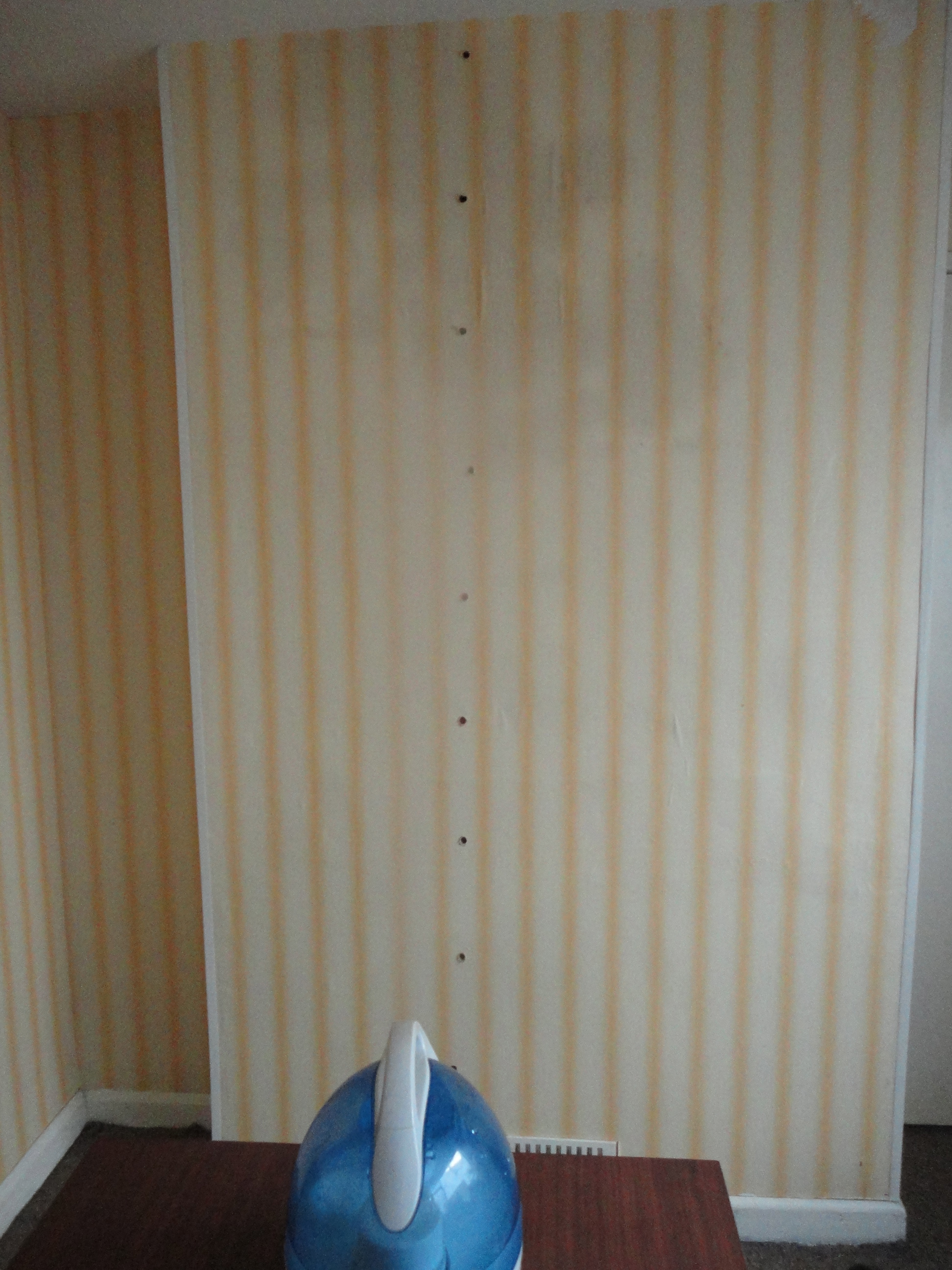
A picture in picture thermal image showing the dampness, note the holes are warm still from the drilling of the mortar samples.
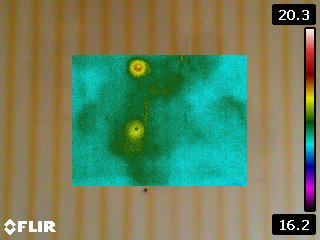
This thermal image shows a quite a large level compared to the bottom thermal image
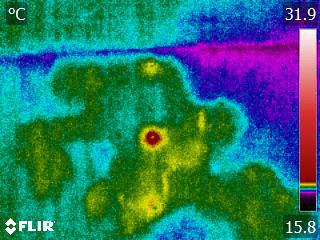
The below thermal image shows a difference in temperature between Sp1 and Sp2 being .3 degrees, this shows how powerful thermal imaging can be using temperature differences. My client now was convinced that the problem could be solved after spending literally thousands of pounds for nothing. All results were carried out to BRE Digest 245 giving us quantitative results and the client complete peace of mind.
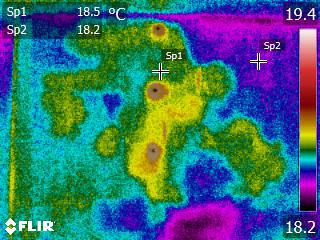
| HEIGHT | TMC % | HMC % | FMC % |
|---|---|---|---|
| 2250mm | 1.1 | 1.9 | NIL |
| 2000mm | 2.3 | 3.5 | NIL |
| 1750mm | 2.7 | 4.0 | NIL |
| 1500mm | 0.4 | 0.8 | NIL |
| 1250mm | 0.2 | 0.4 | NIL |
| 1000mm | 0.4 | 0.8 | NIL |
| 750mm | 0.6 | 0.7 | NIL |
| 500mm | 0.7 | 1.0 | NIL |
| 250mm | 0.7 | 1.0 | NIL |
| 115mm | 1.1 | 1.4 | NIL |
Salts analyses matched with the drilled profile and visible salt damp staining, this confirmed hygroscopic salts from long term burning of fossil fuels, and no free moisture which means that there is no leak in the roof or around the chimney and probably never was.
Below is a time lapse video of salt damp
Below is the before and after pictures of the time lapse showing the salt damp on where a chimney used to be in a property in Trowbridge Wiltshire.
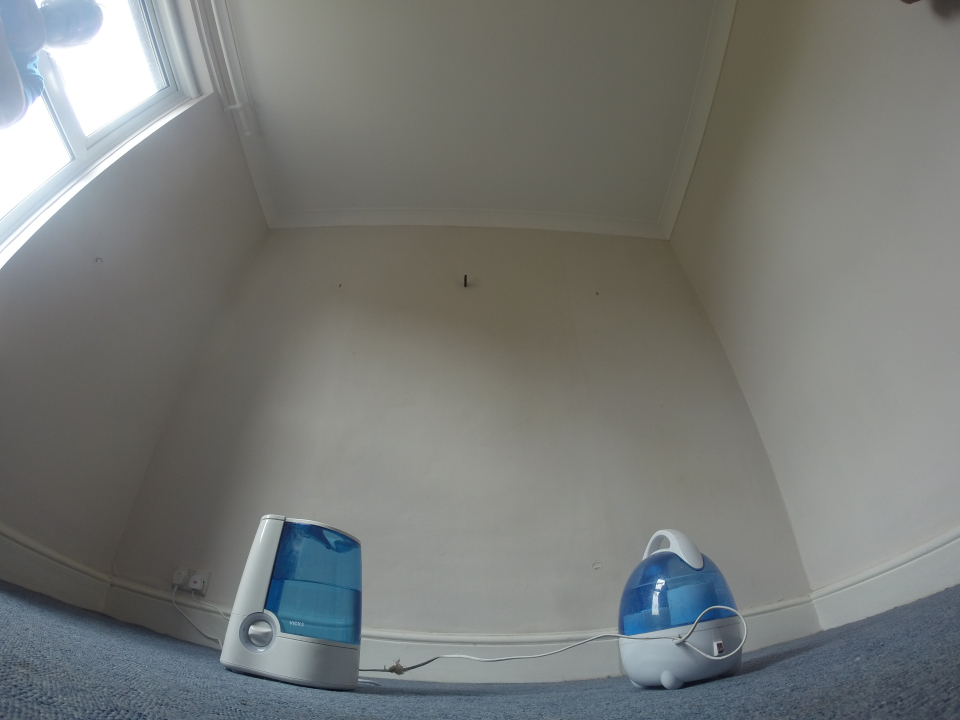
Note the dampness on the wall in the below picture, this is hygroscopic salts absorbing moisture from the air that has been made humid by the humidifier
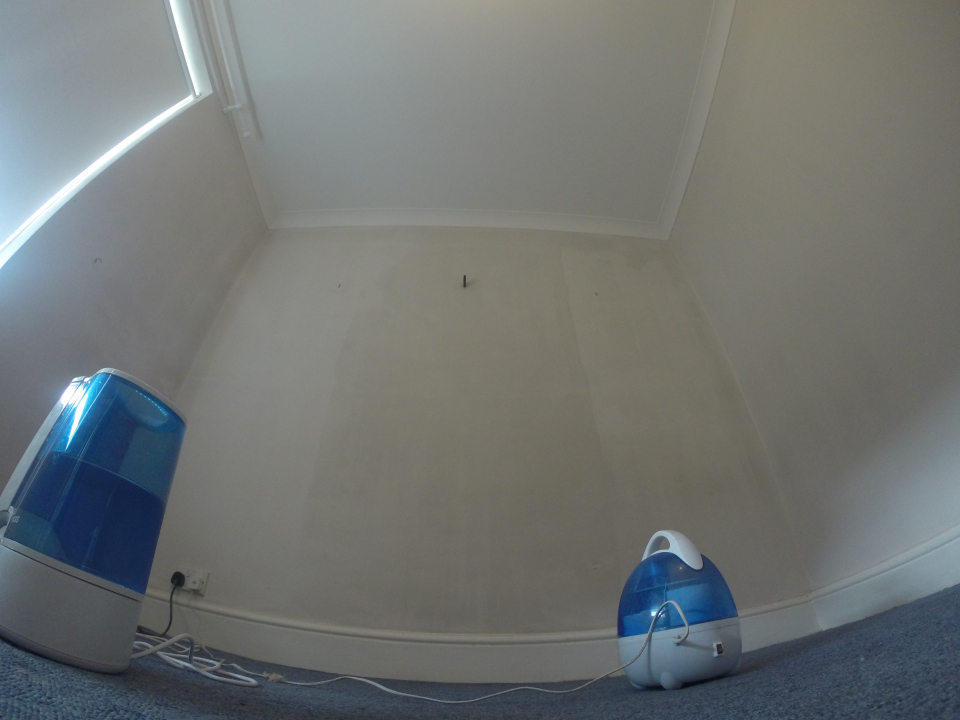
What is condensation and why is it a problem now? One of the biggest points of confusion for homeowners...
What is condensation and why is it a problem now? One of the biggest points of confusion for homeowners...
What is condensation and why is it a problem now? One of the biggest points of confusion for homeowners...
What is condensation and why is it a problem now? One of the biggest points of confusion for homeowners...
What is condensation and why is it a problem now? One of the biggest points of confusion for homeowners...






Copyright 2017 Complete Preservation All Rights Reserved. | Web design by Dsgn One
